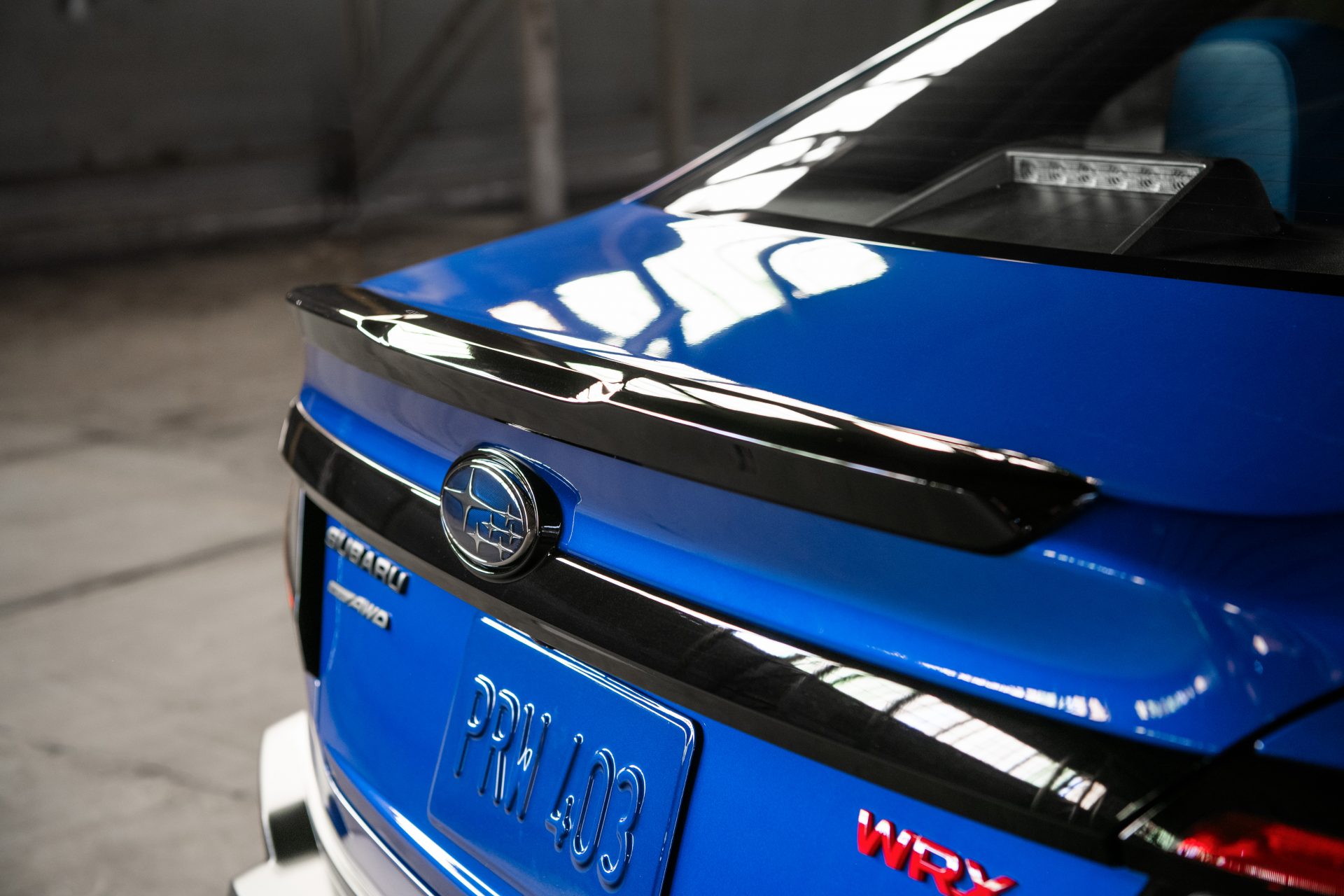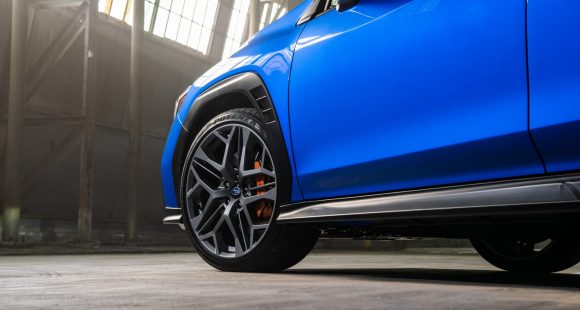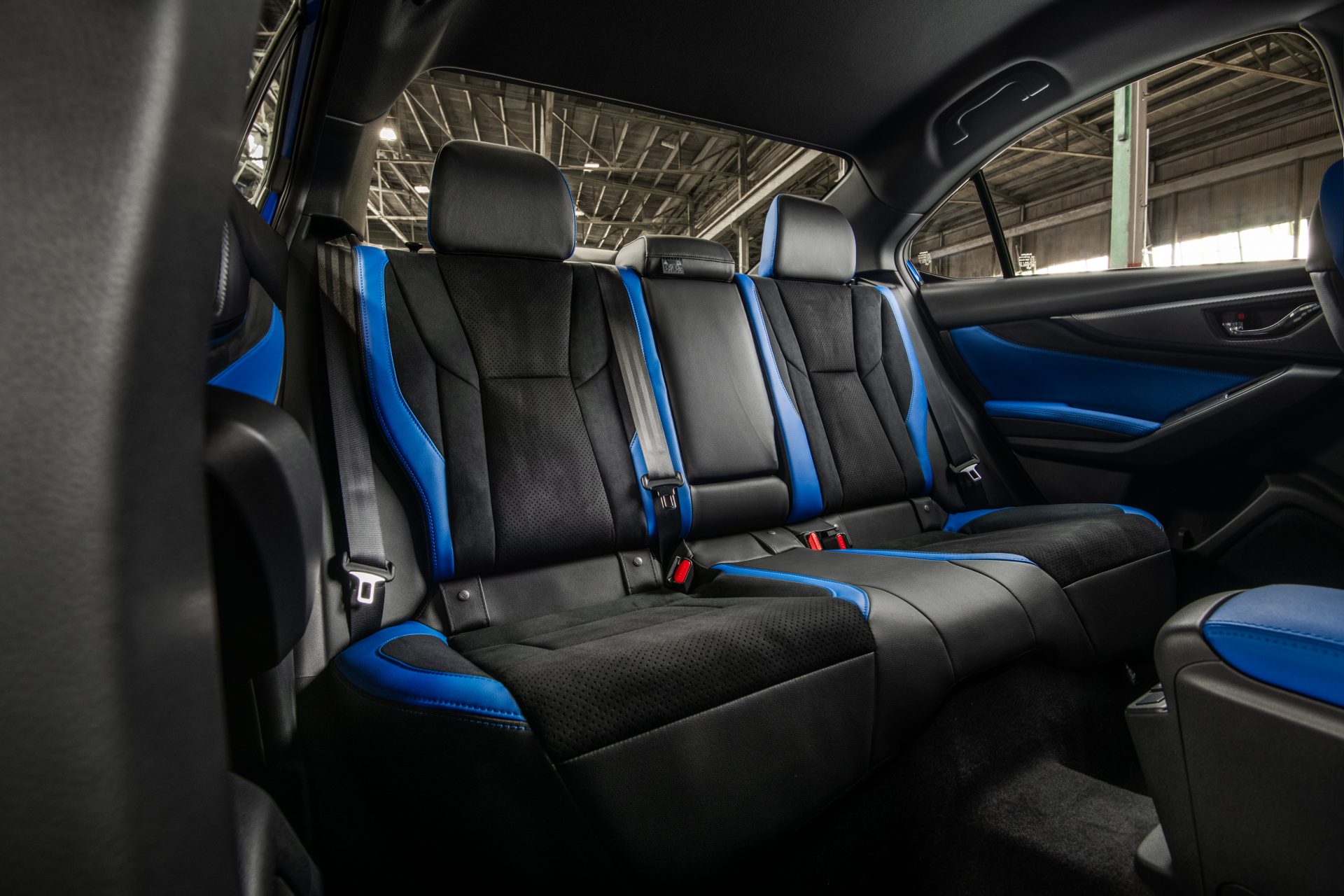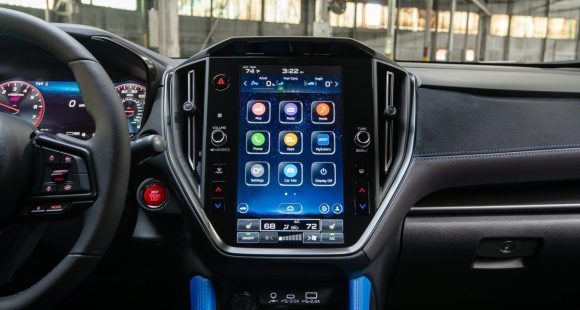2014 Chevrolet Spark EV
It was just last year that Chevrolet introduced their mini car, the spark, to a U.S. market desperately seeking ways to save on gas. And while sales have taken off, it didn’t exactly fan the flames of desire for anyone hoping “performance” and “fun” were part of the equation. Well now there’s an all new, all electric spark, that’s a little more green, and a lot more mean!
…or as “mean” as a mini car can be. But with the Spark stepping into the EV ring, it’ll take on heavy weights like the Nissan Leaf, newcomers like the Fiat 500e, and even plug-ins like Chevy’s own Volt. So it needs as much attitude as it can muster; as efficiency alone just won’t cut it anymore.
Luckily, the powertrain does have attitude; and like Napoleon, the Spark EV is a little car with a lot to prove. Its 21 kilowatt hour Lithium Ion battery pack, mounted low, between the rear wheels, sends juice up front, where an electric motor quietly churns up 105 kilowatts, that’s 140 horsepower and a neck-snapping 400 lb-ft of torque.
 Though we didn’t get to computer clock it, GM says 0-60 time is under 8 seconds and our intro drive certainly felt like it. We even managed to chirp the front tires, as all that torque-y goodness is instantly available from stand still right up to a top speed of 90 MPH. A dedicated Sport mode increases throttle response even more.
Though we didn’t get to computer clock it, GM says 0-60 time is under 8 seconds and our intro drive certainly felt like it. We even managed to chirp the front tires, as all that torque-y goodness is instantly available from stand still right up to a top speed of 90 MPH. A dedicated Sport mode increases throttle response even more.
Efficiency-wise, the Spark EV is on par with other EV rivals, and its estimated 82 mile cruising range in mixed driving felt honest, and attainable. So as long as you plan ahead, you can leave your range anxiety behind.
Adding close to 600 pounds over its gas powered counterpart, the all-electric Spark actually achieves a closer 50/50 front and rear weight distribution. Yet with near double the horsepower and five times the torque output, additional reinforcements were needed throughout the chassis. Specially tuned coil springs for the MacPherson strut front and torsion beam rear suspension were added, as well, and disc brakes to all four corners.
We admit “Fun to Drive” is a clichéd way to describe any driving experience, but it is the truth for the Spark EV. More so than any other electric driver, the Spark has an effortless power delivery, tight, composed ride, and a sporty responsiveness; all of which will help you silently but surely navigate the urban sprawl.
For fans of the original Spark, very little changes outside; and everything that has, was done so in the name of efficiency. Front end design remains the same, with the upper grills now closed off, and active grill shutters below. Aero accents on the side mirrors, fenders, underbody, and on top direct and deflect airflow.
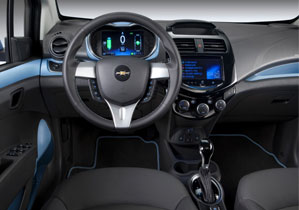 The interior continues to shine, with its refreshing simplicity now enhanced by a 7-inch LCD digital gauge cluster. Lifted from the Volt, its range-indicating Confidence Gauge adjusts in real time to your driving style and estimates a maximum and minimum range. There are also readouts for power consumption and regeneration, and an integrated trip computer.
The interior continues to shine, with its refreshing simplicity now enhanced by a 7-inch LCD digital gauge cluster. Lifted from the Volt, its range-indicating Confidence Gauge adjusts in real time to your driving style and estimates a maximum and minimum range. There are also readouts for power consumption and regeneration, and an integrated trip computer.
Chevy’s MyLink interface comes standard, on a second 7 inch LCD display in the center stack. In addition to fielding infotainment duties, it provides more detailed readouts of battery charge and vehicle power use. Seats on 1LT trim are cloth, with leatherette for the top 2LT. All the goodies, like satellite radio, Bluetooth, and heated seats come standard. Cargo room is down slightly, to 23.4 cubic feet with the rear seats folded.
Government Fuel Economy ratings for the Spark EV are, of course, not really needed, as there’s no traditional fuel consumed or emissions released. But the equivalent combined rating is a lofty 119 MPGe.
Charging is standard fare, with a 120 volt trickle charger included, 240 volt capability, and the availability of the segment’s first SAE approved DC combo Fast Charger, capable of an 80 percent charge in 20 minutes. We estimate a cost of around $2.50 per home recharge.
Currently only available in California and Oregon, the 2014 Chevrolet Spark EV in base 1LT trim begins at $27,495. But, government incentives drop that below the 20 grand mark. More importantly, monthly leases are available for as little as $199.
Going EV seems a natural fit for the Chevrolet Spark. And its all-electric powertrain is a monster within the small car segment. So even if its sales don’t start a landslide, it has already accomplished something far greater: making itself, and the EV segment as a whole, impossible to ignore. It’s the most impressive mini-EV you’ve never heard coming!
Specifications
- Horsepower: 140
- Torque: 400 lb-ft
- 0-60 mph: Under 8 seconds
- EPA: Combined rating 119 MPGe
2025 Subaru WRX tS
Subaru’s “World Rally eXperimental” Gets Tecnica-Tuned Tech
Building on its global rally heritage, WRX has been a standalone Subaru nameplate, marketed separately from garden variety Impreza, for two generations now. And while the current WRX still lacks the full STI treatment, this WRX tS serves up some of that high-performance spice we’ve been longing for.
Before we go flat out into our Track Test of this 2025 Subaru WRX tS, lets open the Subaru dictionary so we’re all on the same page. “tS” stands for “tuned by STI;” and “STI” is an acronym for “Subaru Tecnica International,” the brand’s high-performance sub-group best known for upgrading the WRX— oh, that stands for “World Rally eXperimental,” in case you didn’t know.
All that said, STI has been largely dormant for this WRX generation, but this tS sprinkles more of their engineering magic into the mix. No, that doesn’t mean extra power, but does mean significant chassis-related improvements.
First, electronically controlled dampers, adjustable through the 11.6-inch tablet-style infotainment screen. That meant a softer “comfort” mode on the 10+ hour commute to and from Savannah’s Roebling Road Raceway. But once we were there, it was the firmer “Sport+” setting all the way, heightening response from the WRX’s throttle and already quick dual-pinion power steering system. There’s still some body roll for rally-esque weight transfer, but it’s well sorted and provides the “toss-ability” you want in a WRX.
Though if you do autocross your tS, which we implore you to do, you might feel the six-piston front, two-piston rear Brembo brakes first. The bite is strong, giving good rotation in the corners and plenty of “halt” for this 3,400 lb. compact with minimal fade, keeping us on track all week…until some unfortunate winter weather passed overhead. No worries here, as Subaru’s Symmetrical All-Wheel-Drive system got us to the track for some powdered deserts: Frosted donuts served up Michelin style, a set of winter tires different from the grippy Bridgestone Potenza S007 rubber the tS typically rides on. Some prior hot laps of California’s Sonoma Raceway gave credence to those Bridgestones, and showed us what this hot-compact can do in ideal conditions.
It’s well sorted and provides the “toss-ability” you want in a WRX.
Other tS enhancements are cabin-based, namely these beautiful blue Recaros. Most of our staff appreciated their moderately-aggressive bolstering on both street and track. And they’re even heated, too. Another tS-only appointment is this 12.3-inch digital gauge display. It mimics the standard analog gauges with some additional info, but can switch to a navigation mode for more convenient route guidance.
We do wish our tS came in the new Galaxy Purple or the trademark World Rally Blue, but this Crystal White paint wasn’t too shabby, contrasting its Cherry Blossom Red badging and blacked-out lip spoiler. Otherwise, the tS is like any other WRX, down to the hood scoop funneling air to the top-mounted intercooler.
Underneath is the same turbocharged 2.4-liter flat-four in all other trims, boxing at 271 horsepower and 258 lb-ft of torque. The freak winter weather stopped straight-line testing, but a 0-60 time estimate of 5.5 seconds is about as spry as you realistically need, pulling strong through most of the tach; though the 6,000 RPM redline required attentive shifting of the six-speed box, which the tS comes exclusively with. The throws are precise, if a little long, and the clutch is wonderfully weighted.
With discontinuation of the Base trim, pricing for the WRX now starts with Premium at $36,920. The tS is at the top of the lineup with the automatic-only GT, both starting at $46,875. All WRXs continue to be made in Gunma, Japan.
If you’re an enthusiast itching to do the tuning yourself, perhaps the 2025 Subaru WRX tS is not for you. But if you want a plug-and-play experience, this is it. While it won’t exactly bestow the loose-cannon, top-level driving skills exhibited by famous WRC drivers upon you, the tS moves this WRX’s game in a direction we’ve so desperately wanted Subaru to take.
Specifications
As Tested
- Engine: 2.4-liter flat-four
- Tranmission: 6-speed manual
- Horsepower: 271
- Torque: 258 lb-ft















